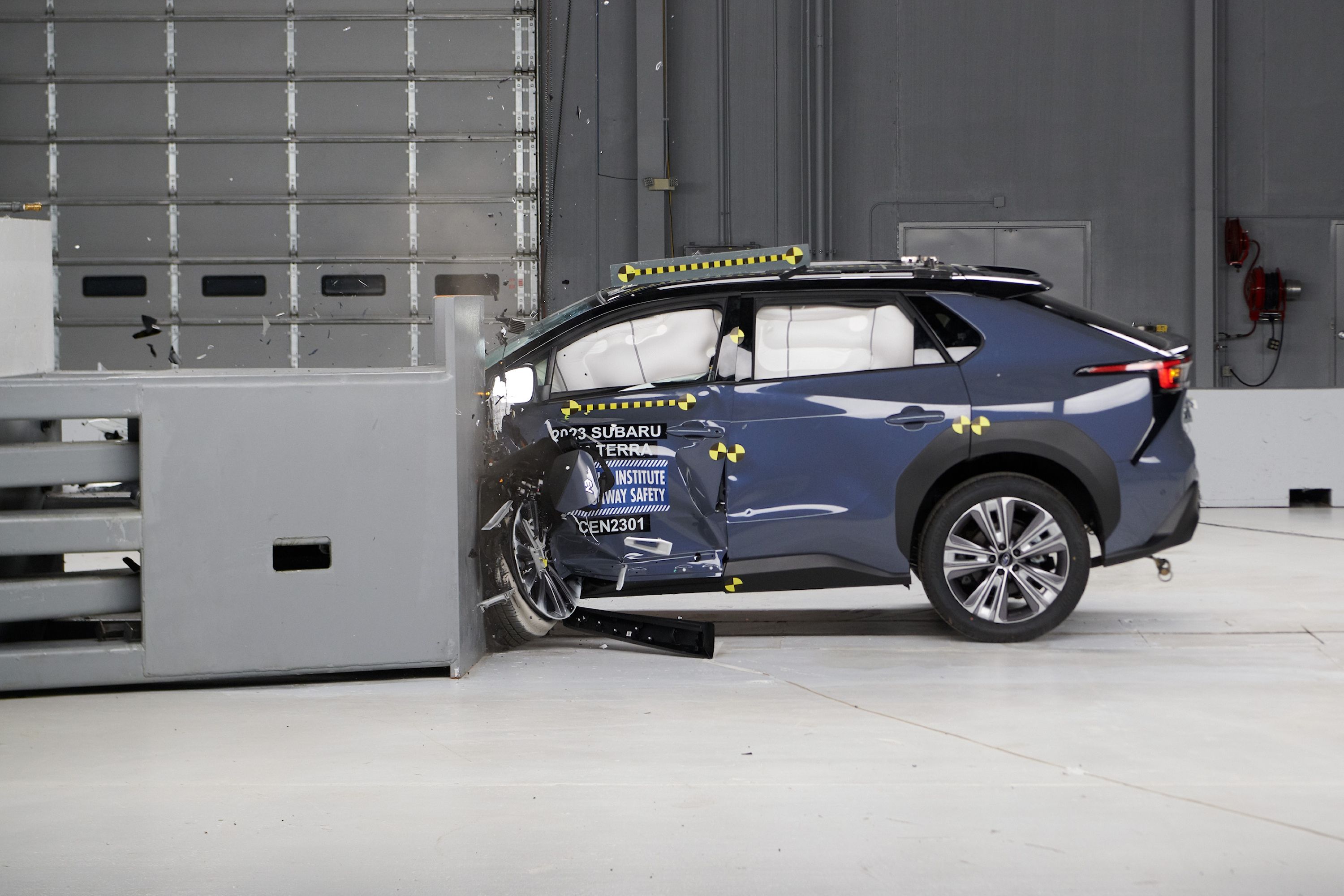Key Takeaways
- Subaru Forester is the only compact SUV to receive top rating in updated IIHS vehicle-to-vehicle front crash prevention test.
- Seven of the 10 vehicles evaluated got a rating of Moderate or Poor.
- Updated test conducted at three speeds in three different situations.
The Insurance Institute for Highway Safety has updated its vehicle-to-vehicle front crash prevention test, making the criteria stricter. In the first batch of new vehicles to be tested (small crossover SUVs), seven of the ten evaluated cars received a rating of Moderate or Poor, showing plenty of room for improvement in modern driver assistance systems.
The Subaru Forester is the only small crossover SUV to receive a rating of Good in the new test. The Honda CR-V and Toyota RAV4 obtained an Acceptable rating, whereas the Hyundai Tucson, Jeep Compass, and Ford Escape received a Marginal score. Rather worryingly, four compact SUVs – the Mazda CX-5, Mitsubishi Outlander, Volkswagen Taos, and Chevrolet Equinox – were rated as Poor.
Updated To Account For More Severe Crash Scenarios
The crash prevention technology was relatively new when the original test was created. However, by the end of 2022, all vehicles were earning a top score, with test runs happening at speeds of 12 and 25 mph. The updated vehicle-to-vehicle front crash prevention test now occurs at much higher speeds: 31, 37, and 43 mph. The IIHS says these increased speeds reflect “a substantially greater proportion of police-reported front-to-rear crashes, including many that are more severe,” said the safety organization.
Related
IIHS Says Vast Majority Of Driver Monitoring Systems Are Poor
Not a single system tested by the IIHS met the requirements for driver monitoring, and BMW’s system didn’t even notice when the camera was covered.
The IIHS conducts the test with a passenger car-like target, a motorcycle target, and a dry van trailer. Each of the tests is conducted at three different speeds. The IIHS notes the motorcycle or passenger car tests always have the target in the center lane, offset to the left or the right. The trailer, however, is in the center of the lane. In the target tests, both the forward-collision warning (FCW) and automatic emergency braking (AEB) systems’ performance are evaluated, but tests with the trailer evaluate the former only.
How Did The Compact SUVs Perform?
The Forester avoided crashing into the passenger car target at every speed and successfully avoided the motorcycle at 31 and 37 mph. In the 43 mph test, it slowed down by 30 mph (on average) before colliding with the target. The FCW alerted the driver before the required 2.1 seconds ahead of the impact. We expect the 2025 Forester revealed last year to perform even better. The CR-V performed the same as the Forester but could not slow down consistently in the 43 mph motorcycle test. While the rest of the results don’t seem very good, the IIHS notes that even vehicles with the Marginal rating exceeded the requirements for the highest rating in the old test.
The Escape performed admirably at speeds of 31 mph and slowed down by a decent amount in the 37 and 43 mph tests. Ford’s compact SUV lost points as the FCW didn’t intervene early enough in the 31 mph tests. The crossovers that received the Poor rating failed in several tests. While the Equinox provided a well-timed FCW warning in the passenger car and trailer tests, it either gave a late warning or no warning with the motorcycle. Worryingly, the Chevy showed little speed reduction in the 31 mph motorcycle test and a minor decrease in the 31 mph passenger car test.
Just One Of Many Updated IIHS Tests
Automakers should return to the drawing board and improve their various driver assist systems. More importantly, these results show motorists cannot relinquish driving duties to their vehicle and rely on safety assist systems, as there are several vulnerabilities. This is just one of the IIHS tests that have become stricter following the introduction of more stringent requirements last year, but as cars get bigger and heavier, revisions to the criteria will never stop.

Related
IIHS Finds Definitive Link Between High Crash Scores And Lower Fatality Risk
These findings underline the importance of crash-safety scores for new cars.
“This is a vital update to one of our most successful test programs. The vast majority of new vehicles now come with automatic emergency braking, and our research shows the technology prevents as many as half of all front-to-rear crashes. This new, tougher evaluation targets some of the most dangerous front-to-rear crashes that are still happening.”
– David Harkey, IIHS President.
#Small #SUV #Earned #Good #Rating #Updated #IIHS #Test


